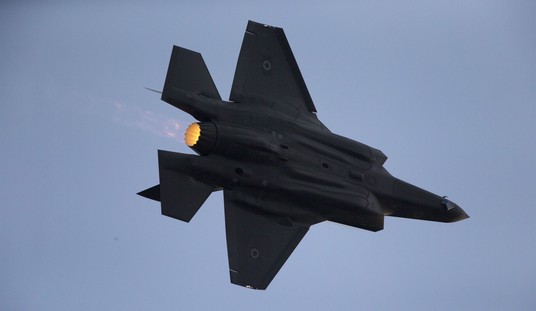Hurricane Gustav is still a serious threat to New Orleans and the rest of the Louisiana coast — but, after its unexpectedly severe weakening over Cuba, there is now reason to hope that perhaps Gustav won’t be the “mother of all storms.”
Dr. Jeff Masters explains what has happened, in a post written at 8:16 AM EDT:
Gustav roared over Cuba as a Category 4 hurricane with 150 mph winds last night, but Cuba exacted a heavy toll on the storm. Gustav weakened to a Category 3 storm after passage over the island, and is still weakening, according to the latest Hurricane Hunter reports. At 7:03 am EDT, the Hurricane Hunters reported a pressure of 960 mb, up 1 mb from their previous pass through the eye at 5:12 am. Surface and flight level winds measured by the Hurricane Hunters suggest that Gustav may only be at Category 2 strength. Top winds seen by the plane’s SFMR instrument so far this morning have been about 105 mph. The top flight level winds of 103 knots at the flight altitude of 10,000 feet also support a surface wind of 105 mph. NHC has elected to keep Gustav at Category 3 120 mph strength with their 8am advisory, probably because the satellite appearance still supports a Cat 3. The boundary between Category 2 and Category 3 is at 115 mph.
Visible satellite loops show a ragged and lopsided looking hurricane. Upper level winds from the south are creating 10-15 knots of shear over Gustav, and restricting the upper-level outflow on the south side. The 28-mile wide eye is not very distinct, and the Hurricane Hunters reported that the eyewall was missing a chunk on the south side. Long range radar from Key West also shows the missing southern portion of the eyewall.
Like I said, that post was written at 8:16 AM, but Gustav still looked ragged as of 9:45 AM, the most recent satellite image on the NOAA loop — though its eye did become distinct again, around 9:00 AM. [UPDATE: The 11am EDT discussion says the “eye-like feature” is not actually at the center of the storm’s circulation. The discussion vividly describes Gustav’s lack of organization:
GUSTAV CONTINUES TO LOOK SOMEWHAT RAGGED IN SATELLITE APPEARANCE THIS MORNING. THE DEEP CONVECTION IS VERY ASYMMETRIC…WITH THE COLD TOPS DUE MAINLY TO ONE HOT TOWER IN THE WESTERN EYEWALL. WHILE AN EYE-LIKE FEATURE IS APPARENT…IT IS DISPLACED TO THE NORTHEAST OF THE AIRCRAFT-REPORTED CENTER. THE LATEST REPORT FROM A NOAA HURRICANE HUNTER INDICATES THE CENTRAL PRESSURE HAS RISEN TO 962 MB…ALONG WITH AN ELLIPTICAL 30 BY 20 N MI WIDE EYE OPEN TO THE SOUTHEAST. THE INITIAL INTENSITY IS REDUCED TO [120 MPH]…AND THIS MIGHT BE A LITTLE GENEROUS BASED ON THE AIRCRAFT WINDS.]
Bottom line, Hurricane Gustav is not an especially healthy storm at the moment, certainly nothing like the textbook major hurricane we saw south of Cuba yesterday. This is good for two reasons. One, Gustav has to get itself structurally re-organized before it can rapidly intensify, and if it takes long enough to do that, it may run out of warm Loop Current water before it can turn back into a monster. (As Eric Berger says, now is the time for rapid intensification to occur, if it’s going to happen at all.)
Two, even if Gustav does turn back into a monster a bit later today (say, late this afternoon), that’s better than doing so this morning, because it decreases the number of hours of Category 4+ winds blowing over the Gulf of Mexico and building up a massive storm surge. You’ll recall that Katrina’s surge was enormous because it spent so much time over the Gulf as a huge, intense hurricane. With each hour that passes without Gustav strengthening, the odds of a similar phenomenon occurring decrease. (Not that a borderline Cat. 2/3 hurricane doesn’t build up a significant surge, mind you. But it’s a far cry from a Cat. 4 or 5.)
And another bit of a good news: Dr. Masters says “the upper level wind environment is favorable for intensification, but not as favorable as during yesterday’s rapid intensification.”
So, what will Gustav’s impact on New Orleans be? It’s too soon to say, and it could still be the “storm of the century” that Ray Nagin fears. But that seems less likely than it did 12 hours ago. Again quoting Dr. Masters:
NHC’s current storm surge forecast calls for a storm surge of 18-25 feet to the right of where the center of Gustav comes ashore. The latest computer generated storm surge map shows a bit lower maximum storm surge levels — about 15-18 feet on the east side of New Orleans. Storm surge levels of this magnitude are characteristic of a Category 4 hurricane. The levee system of New Orleans is designed to withstand a storm surge characteristic of a Category 3 storm. If the NHC storm surge forecast is correct, there will likely be multiple levee failures in the New Orleans levee system resulting in flooding of portions of the city.
However, the extent of Gustav’s current weakening was unexpected, and this could substantially reduce the storm surge. Given the current intensity forecasts, I believe there is a 60% chance that a lower storm surge of 12-15 feet, characteristic of a Category 3 hurricane, will affect the city. If the Army Corps of Engineers’ assertion that the levee system can withstand a Category 3 hurricane is correct, the levees will hold.
P.S. In terms of watching whether Gustav intensifies rapidly over the Loop Current, keep in mind that the barometric pressure is the first thing to change when a storm “bombs out.” The wind speed often takes a few hours to “catch up” with a pressure drop. So the pressure is the thing to watch for. If Gustav exits the Loop Current without a significant pressure drop, then we’re probably pretty much in the clear. On the other hand, if there’s a last-minute pressure drop just before it exits the warm-water area, an increase in wind speed will likely follow, even if by that point the storm is over a cooler-water area.
Based on Gustav’s current location and forward speed, I’d say we’re looking at a six-hour window, or thereabouts. If the pressure doesn’t drop significantly by, say, the 5:00 PM advisory, we’ll probably be able to say we’ve dodged a bullet. (That’s an off-the-top-of-my-head estimate; someone please correct me if you think I’m wrong.)








Join the conversation as a VIP Member